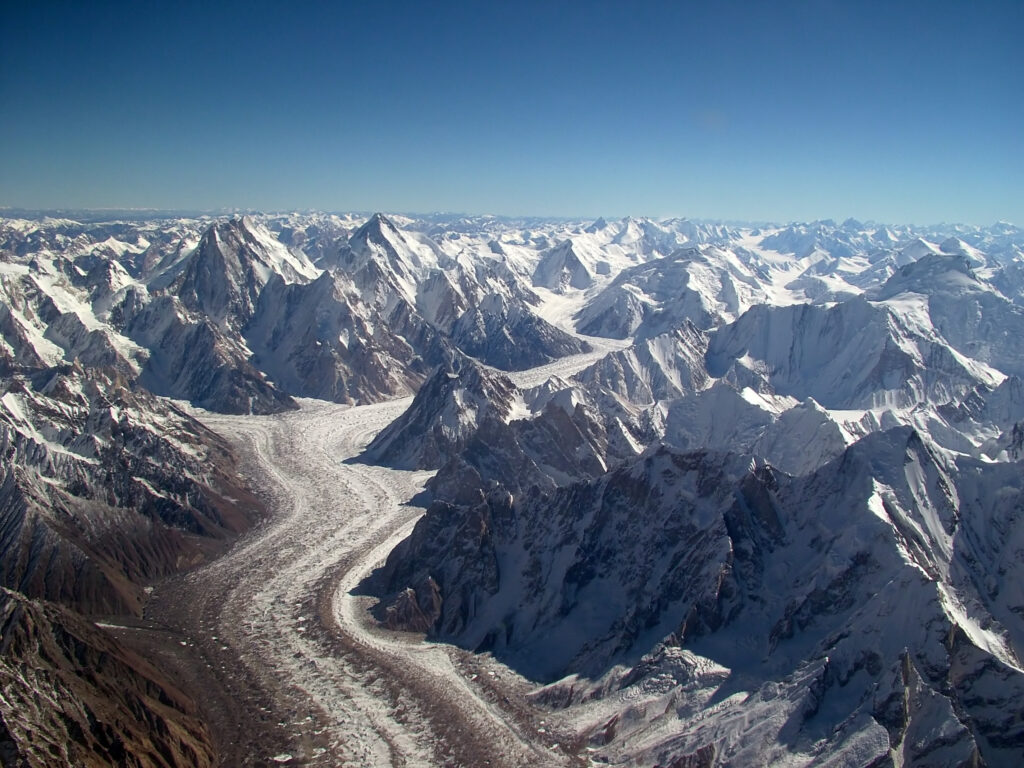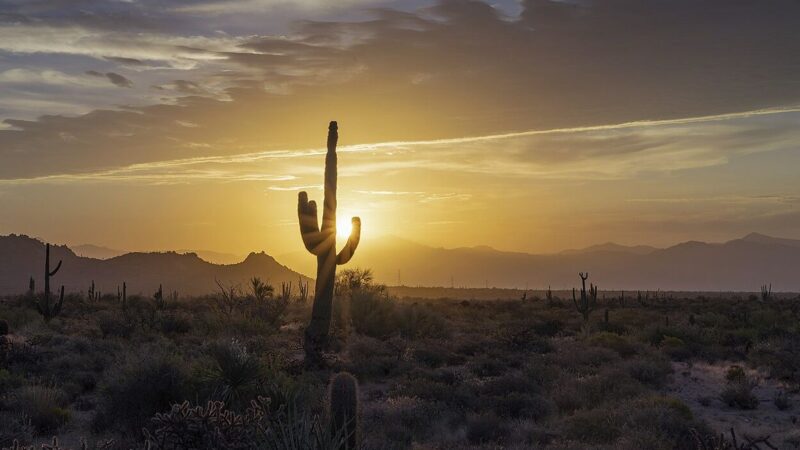
Himalayan glaciers melting because of high-altitude dust
Dust, climate change and air pollution are triple threat to water source for a billion people
An estimated 5 billion tons of desert dust disperses into Earth’s atmosphere every year. Some of it makes its way to the roof of the world — the Himalayas — where it warms glaciers and accelerates snowmelt, according to a new study by an international team of scientists.
Prior to the study, which is published in the journal Nature Climate Change, experts did not believe dust to be a significant driver of snowmelt in the region. Previous research focused on the effects of black carbon, which is released into the air by burning fossil fuels or biomass such as plants, trees and shrubs.
The study represents a major step toward understanding how these glaciers respond to the combination of dust, climate change and air pollution, said UCLA professor Thomas Painter, a NASA snow expert and principal investigator of the study.
“We’re really starting to understand the physical processes of snow and ice distributed across the globe,” Painter said. “There’s been such an emphasis through the last two decades on black carbon, but a heavier focus needs to come onto dust and how we can reduce dust load.”
“These elevated aerosol layers blow across industrial and desert areas in the Indian subcontinent and the Middle East and hit smack-dab in the Himalaya,” Painter said. “We found dust is the dominant cause of melt in those areas.”
While climate change gets the lion’s share of blame for glacial declines worldwide, the cleanliness of a snowpack can be a larger contributing factor. Though dust is a natural part of Earth’s systems, the amount of it in the atmosphere has steadily increased since the Industrial Revolution, when humans expanded into desert areas and broke through surface crust that held large amounts of dust in place.
The darker or dustier an object is, the more heat it absorbs — a measure of reflected light called albedo. Dark objects have low albedos; they absorb most light that falls on them and turn it into heat, which is why dark surfaces like asphalt scald bare feet on hot days. Light objects with higher albedos do the opposite: They reflect light and absorb less heat.
Fresh, clean snow is the brightest naturally occurring surface on Earth, reflecting around 90% of incoming sunlight. Dust and black carbon are no different than asphalt: They absorb sunlight and transform it into heat, which is sent straight into the surrounding snowpack. The temperature of the snow rises. Eventually it starts to melt.
Snow particles clump together over time, further speeding the process. The larger the particles are, the more sunlight they absorb, said Yun Qian, a scientist at the U.S. Department of Energy’s Pacific Northwest National Laboratory and a study co-author.
“Dirty snow or aged snow absorbs sunlight more easily than fresh white snow,” Qian said.
The study combined climate models and satellite data to reach its conclusions. Painter developed remote sensing instruments and teamed up with Qian, who creates complex climate models, to investigate the problem from both perspectives. Painter collected data from multiple satellites to reaffirm the measurements Qian’s model produced.
Climate change affects mountain glacial ice in two primary ways: It melts lower-elevation — and therefore higher-temperature — snowpack earlier in the spring, and it raises the average temperature of higher-elevation snowpack, where dust lands in higher concentrations.
“Dust will dominate even more as those lower-elevation snows begin to melt earlier and earlier in the year due to climate change,” Painter said. “The intensity of melt is only poised to increase.”
The overall amount of precipitation that falls each year likely won’t change, but climate change and dust will condense the melting period, which usually lasts well into the summer, into a few short spring months. Capturing all of that water in the spring will be difficult for water managers and could lead to shortages and political conflict, said Chandan Sarangi, lead author of the paper and a scientist at the Indian Institute of Technology. Over a billion people rely upon water stored in the snow and ice of high-mountain Asia, which includes major mountain ranges such as the Himalayas, Tien Shun and Hindu Kush. Losing that resource could produce catastrophic results.
There are no easy answers. Creating systems to capture black carbon and reduce desertification, such as planting desert crops with roots that hold down dust, would be a near-impossible undertaking, Qian said.
“In theory, we have two ways to limit the dust that ends up in High Mountain Asia. We can weaken the west wind in the high atmosphere or make the Middle East green,” he said. “But either way is difficult, probably more difficult than reducing greenhouse gases emissions.”
Top image: The Baltoro Glacier in the Karakoram range winds through some of the world’s tallest mountains.| Guihelm Vellut/Wikimedia Commons




